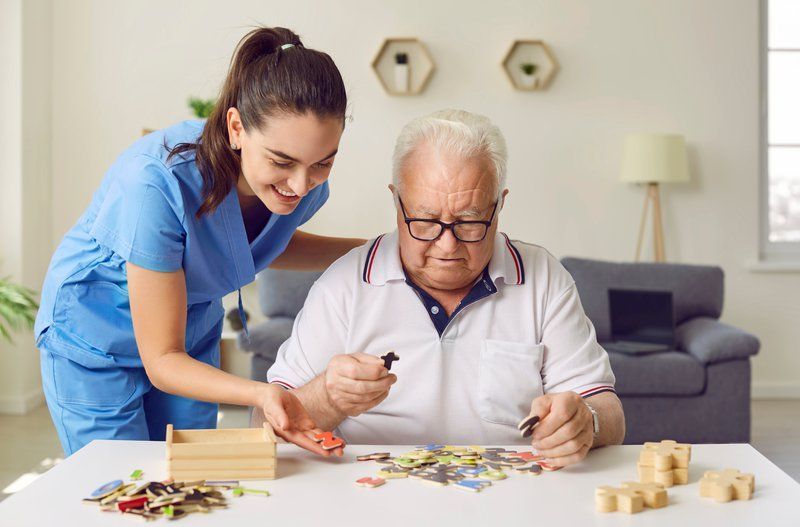BLOG
Rehabilitation After Brain Injury: What to Expect
A brain injury often brings significant changes, requiring extensive rehabilitation to support recovery. Understanding what rehabilitation entails can help families navigate this complex journey. This guide explains the stages of brain injury rehabilitation, what to expect, and how to support loved ones.
Brain injury rehabilitation encompasses physical, cognitive, and emotional therapies tailored to each individual. Knowing what these therapies involve and how they progress over time helps families stay informed and proactive in their loved one’s recovery.
The Initial Assessment and Setting Goals
Rehabilitation typically begins with a comprehensive assessment conducted by a team of specialists. This assessment identifies physical, cognitive, and emotional impairments that impact daily life. By understanding a person’s unique challenges, the team can set achievable, personalized goals for their recovery journey.

The assessment also considers the individual’s level of independence, family support, and overall health. Clear, structured goals form the foundation of the rehabilitation plan, with progress also measured regularly. Families play an important role by helping set realistic expectations and encouraging their loved one’s commitment to these goals.
Setting goals early provides a roadmap for recovery, helping the individual and their family stay focused. Regular updates from the care team allow families to track progress and celebrate milestones.
Physical Rehabilitation and Mobility Training After Brain Injury
Physical rehabilitation is often a core component of recovery for brain injury patients. It addresses mobility challenges and physical limitations. This part of rehabilitation may include exercises for balance, strength, and coordination, often conducted by a physical therapist. Mobility training and adaptive techniques empower individuals to regain functional independence.
Therapists may also introduce assistive devices, such as walkers or braces, to support safe movement. Effectively using these tools can improve a person’s confidence and ability to navigate daily life. Physical rehabilitation also requires patience and consistency, with each small improvement building toward long-term mobility.
Families can assist by promoting regular practice and encouraging persistence, even when progress feels slow. Recognizing physical achievements, however small, reinforces motivation and fosters a positive outlook on the rehabilitation journey.
Cognitive Rehabilitation and Memory Support After Brain Injury
Brain injuries frequently result in cognitive difficulties, including memory loss, reduced attention, and impaired problem-solving abilities. Cognitive rehabilitation targets these challenges, with exercises designed to improve concentration, memory, and processing skills. A cognitive therapist guides individuals through activities that reinforce mental abilities.
Therapists may use memory aids like checklists or calendars to support daily routines. Furthermore, structured exercises can strengthen cognitive pathways, aiding the brain’s natural healing process. Cognitive rehabilitation also encourages mental flexibility and adaptability, both critical in managing life post-injury.
Family involvement in cognitive rehabilitation provides additional reinforcement for progress. Engaging in memory games or helping with routine reminders builds a supportive environment that boosts recovery.
Emotional and Behavioral Therapy
Emotional and behavioral changes are common after a brain injury and may require specialized therapy to manage effectively. Individuals might experience mood swings, frustration, or anxiety due to changes in their abilities and identity. A psychologist or counselor can guide coping with these challenges using techniques like cognitive-behavioral therapy.
Emotional therapy helps individuals navigate new feelings, enabling them to manage stress and adjust to their condition. Family members also benefit from understanding these emotional shifts and learning effective communication and response methods. Patience and empathy from loved ones can be powerful tools in fostering emotional resilience.
Behavioral therapy may also address impulsivity or agitation, common symptoms after a brain injury. In addition, structured approaches help individuals gain greater control over these behaviors, improving interactions with family and caregivers.
Reintegration into Daily Activities as Brain Injury Rehabilitation
Rehabilitation empowers individuals to participate in everyday activities, restoring normalcy. Occupational therapy is critical in this phase, focusing on skills like dressing, cooking, and managing personal hygiene. Therapists teach adaptive techniques to simplify tasks and build confidence.

Caregivers may also be trained in strategies to support daily activities, ensuring that loved ones retain as much independence as possible. Structured routines and minor adjustments in the home can also make daily life more manageable. Reintegration into daily activities boosts self-esteem and helps individuals feel more connected to their previous lifestyle.
Family support is essential in maintaining routines and encouraging active participation in daily tasks. These activities become milestones in recovery, reinforcing both physical and mental resilience.
Long-Term Care and Continued Progress
Recovery from a brain injury is often a long-term journey that extends beyond initial rehabilitation. Many individuals require ongoing support and therapy, especially for maintaining cognitive and emotional health. Memory care or assisted living communities specializing in brain injury rehabilitation can provide a structured environment for continuous progress.
Long-term care settings offer access to experienced professionals and regular therapeutic programs, ensuring consistent support. These environments foster social engagement, cognitive stimulation, and physical activity, all crucial for sustained recovery. Families can also feel reassured knowing their loved one receives dedicated care tailored to their needs.
Choosing the right long-term care solution is essential for ongoing progress. Finding a community that aligns with the individual’s rehabilitation goals offers stability, security, and comfort.
Family Involvement and Support Systems
Family involvement is crucial in the brain injury rehabilitation process. A supportive environment fosters motivation, helping individuals stay committed to their recovery journey. Families can assist by reinforcing therapy exercises, creating a structured daily routine, and providing encouragement during challenging times.
Building a strong support network also involves understanding the emotional and behavioral changes associated with brain injuries. Subsequently, caregivers and family members can benefit from counseling and resources that teach effective communication and coping strategies. These efforts strengthen resilience, allowing loved ones to handle setbacks better and celebrate progress.
Regular communication with rehabilitation professionals ensures families stay informed about care plans and progress. When families actively engage with the care team, they can better understand treatment approaches and contribute positively to their loved one’s recovery.
Find the Right Brain Rehabilitation Support for Lasting Recovery
Understanding what to expect in brain injury rehabilitation helps families support their loved ones through every stage. Compassionate, professional rehabilitation services are essential for helping individuals regain independence and confidence in a safe and supportive environment.
Assured Senior Living specializes in personalized brain injury rehabilitation, offering expert care tailored to each individual’s journey. Contact us today to learn how we can support your loved one’s recovery with specialized services and compassionate care.















